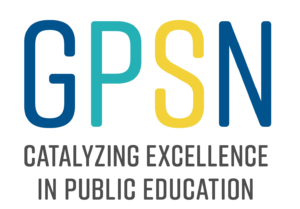A comprehensive review of board resolutions and recommendations for Los Angeles Unified leadership and local education advocates
Resolution Insights: A Review of Los Angeles Unified School Board of Education Resolutions From 2006-07 to 2021-22 reviews all the resolutions LAUSD adopted over the last 16 years with a specific focus on four key policy issue areas: equity, development of a diverse teacher and administrator workforce, expanded learning opportunities, and COVID-19 response.
The report urges both district leaders and advocates to take stock of what resolutions have already passed so that the district can start (or continue) to effectively implement existing policies that have the greatest potential to benefit students today, rather than starting new policy efforts that could be addressed through existing means.
Key Findings
- The board proposed over 1,000 resolutions over the past 16 years.
- Superintendents have led 17% of all Los Angeles Unified resolutions.
- The majority of resolutions passed by the board have been celebratory.
- Most of the boards over the past 16 years have voted as a uniform block, and consensus has only increased.
- Few policies include stakeholder engagement and public reporting mechanisms.
Recommendations
Resolutions are a powerful tool and should be used sparingly.
When resolutions are proposed, create transparency in resolution implementation by including stakeholder engagement and public reporting.
Focus on the implementation of important past resolutions rather than focusing on passing more resolutions.
Methodology and Data Sources
Data Sources
Los Angeles Unified board resolutions served as the primary data source for this analysis. We accessed board resolutions passed from the 2005-06 through 2021-22 school years through the LAUSD–Resolutions search tool available through the Los Angeles Unified Board of Education website. This time period allowed us to cover the tenure of each board member in order to capture all of their authored or passed resolutions.
Methodology
We downloaded all resolutions that were “Adopted”or “Adopted as amended,” as indicated under “Action.” A total of 956 resolutions met this criteria for the relevant time period. We recorded key information about each resolution, including: year, action date, title, author (sponsor/co-sponsor), resolution language, and supporting/opposing/abstaining votes. Where applicable, we added an academic year indicator that ran from August to July. We assigned resolutions that fell within that time frame to an academic year. In instances where we were unable to apply that indicator (Figure 1), we applied the calendar year instead.
We then categorized all resolutions according to our inclusion/exclusion criteria and relevant issue areas. We included any substantive resolutions about equitable funding; diverse, high-quality teacher and administrator workforce; expanded learning opportunities; equitable access for student subgroups; or college-aligned expectations. A total of 114 of the resolutions adopted during that time period were included as part of our full- text analysis. We excluded any celebratory resolutions or substantive resolutions about any issues not included above. We did not complete a full-text analysis of any excluded resolutions (n=842).
For the second stage of analysis of the 114 relevant resolutions, we took the following steps:
We developed a codebook to identify and articulate subcategories (71 total) relevant to each of the four policy areas. For example, in the funding equity policy area, we identified the following categories: targeting student subgroups; targeting school sites based on student demographics; transparent ref formula/distribution/ spending; supplement vs. supplant; mitigate unintended impacts / “hold harmless”; and coherence/alignment with other funding sources.
We coded each resolution against the categorical codes using Dedoose software to identify where a resolution being analyzed incorporates policy and practice considerations relevant to the particular policy areas under consideration. We also utilized inductive coding to surface themes/trends arising in resolutions that were not included in our codebook.
We analyzed quantitative trends based on data summaries available in Dedoose to identify counts and percentages by policy area. We also conducted a deeper qualitative review of specific resolutions and policy issues to allow for descriptive explanations of particular policy decisions made by the board.
